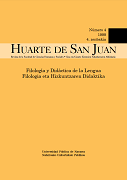Antonio Machado: paisaje más allá del paisaje
Keywords:
Antonio MachadoAbstract
The concept of landscape, since it first appeared linked to poetry in fourth-century China and later in Renaissance Europe, has followed a route between the representation of surroundings and understanding them as a work of art. This mental construct of the landscape, in which aesthetic and emotional elements are both involved, reaches its peak in Romanticism and then faces crisis with the avant-garde. From that point on, an ambivalence as to whether sense-based enjoyment or scientific truth should govern the sensitivity of modern art to the landscape has never ceased to be present. This art values what is far away, not which is near at hand and easily recognized, preferring consciousness not to be bound by the realism of phenomena, but rather to remain open to their virtual side, to allusion more likely to lead to long searching in the inner self. As if he were concerned to preserve this distant echo remaining somewhat removed from the real. Machado's poetic writing, more often than Unamuno's, attempts to bring together spirit and nature. It gives shape in the landscape to states of mind and plunges into an atmosphere of absence, giving its language an aura of solitude and melancholy.
Downloads
Downloads
Published
How to Cite
Issue
Section
License
All articles are published under a Creative Commons (BY-NC-ND 4.0) license. Each article will be assigned a DOI.
Authors retain copyright of their work and grant the journal the right to the first publication. Authors can sign additional agreements to non-exclusive distribution of the published version of the article (for example, in an institutional repository) as long as appropriate attribution to the original publication is provided. Articles can be uploaded to institutional repositories immediately after publication.
Electronic distribution of the articles (for example, academic social networks or personal webpages) is allowed and encouraged.
The journal reserves the right to publicise the work in social networks and other electronic means.







